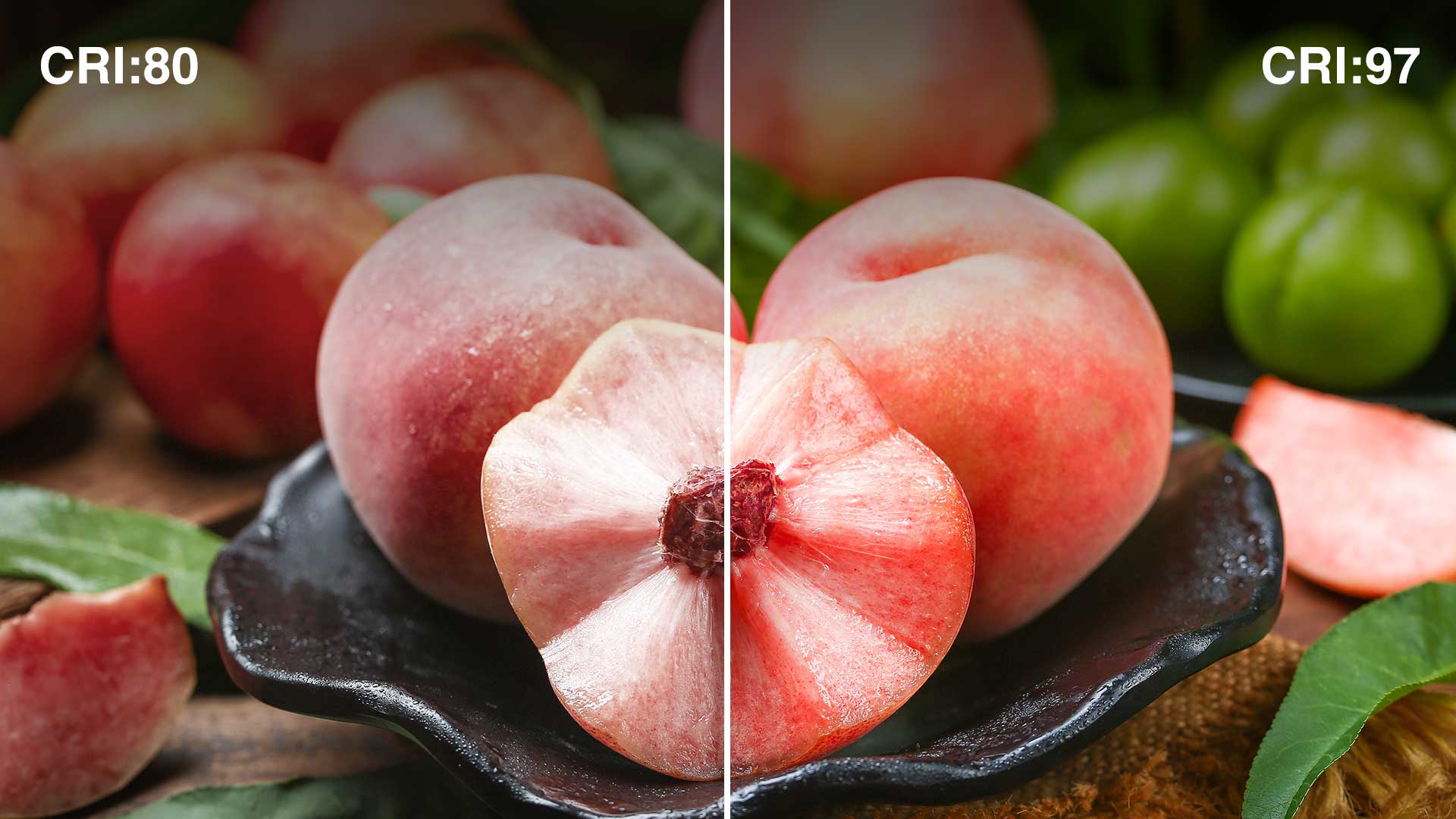What is color rendering index in lighting?
CRI meaning is probably a question to people who are not familiar with the lighting equipment. CRI, short for Color Rendering Index, is designed to score the light source for how accurately it shows colors of the objects comparing with ideal daylight condition, allowing people to examine how light sources that tries to reconstitute daylight will perform.
- To measure at the score of 0 to 100
Grading at a scale from 0 to 100, high color rendering index means better color rendition and color accuracy: color red will be more red, color green will be more green, etc. CRI values not less than 90 are regarded as excellent light source, on the other hand, under 80 are usually taken as poor one.
- To measure artificial light source
Since light source consists of natural one and artificial one, in most cases when concerning the color accuracy of objects, we take natural light source like daylight as the reference and use CRI to measure the artificial light like video light.
- To measure and compare how the color reflected under the artificial light source
Take sunlight as an example. All the colors in the spectrum constitutes sunlight which appears white, yet how the colors of the object under sunlight demonstrate merely depends on how it reflects under sunlight.
When applying artificial light source, people attempt to recreate the reflected color under sunlight for similar effect, but the result varies widely. Under this circumstance, CRI sets the standards for this similarity by means of obtaining the general accuracy of objects' diverse reflected colors under the light source.
Notice that the CRI of a light source cannot be finalized through just looking at it but when the light sourceilluminates on objects.
CRI vs color temperature: What’s the difference?
Unlike CRI, color temperature is a different measurement on the color itself in degrees of Kelvin, categorizing color into warm-yellow toned and cool-blue toned in correspondence with the different features of light.
As the degree Kelvin gets higher, the color temperature tends to fall on the spectrum at the blue end and appears to be whiter and brighter. Conversely, when the degree Kelvin decreases, the color temperature presents to be more amber.
To draw a conclusion, LED color rendering index shows how the objects will be seen in realistic way under various lighting, while color temperature tells the temperature of the objects' emitted light.
How to ascertain the CRI rating?
After making clear the CRI meaning, the next question is how to calculate the light CRI? In fact, it is based on algorithmic calculations after measuring the spectrum of the light source:
- Determine the color temperature of the light source so as to decide the corresponding daylight spectrum as reference;
- Virtually shine the light source onto TCS (test color samples, a set of virtual color swatches) and measure the reflected color. At the same time, a set of virtual measurements for natural daylight with same color temperature will be prepared;
- Determine the R value for each swatch through comparison and take the average value of the R values as the CRI.
Note that CRI requires daylight spectrum for color temperatures of not less than 5000K and Planckian radiation spectrum for less than 5000K.
Color rendering index 80 vs 90: which is acceptable?
A low CRI light source under the score of 80 which does not revel true colors, makes it hard to distinguish between colors, causing safety problems. Apart from that, people who are exposed to a poor light source are more apt to have eye fatigue, headaches and dissatisfied working performance.A high CRI LED light(90 and more) can bring about more natural, vibrant and accurate output of light, hence giving people a healthy and rich skin tone under the light source, as well as better increasing productivity and efficiency for environments and applications where color is considered critical and vital, like indoor decorations company and grocery stores.

To highly make use of CRI, please see some common standards:
- Color rending index 80 basically meets the need for most indoor and business lighting occasion;
- The 90 CRI or higher values can help boost the aesthetic appearance for environments that attach importance to color appearance. For example, hospitals or conference hall for professional reasons and grocery stores or photography studio for aesthetic reasons.
If you want to know more about key specifications of video light and choose a light for your video making, then go and see How to choose light for video recording? for more information.
